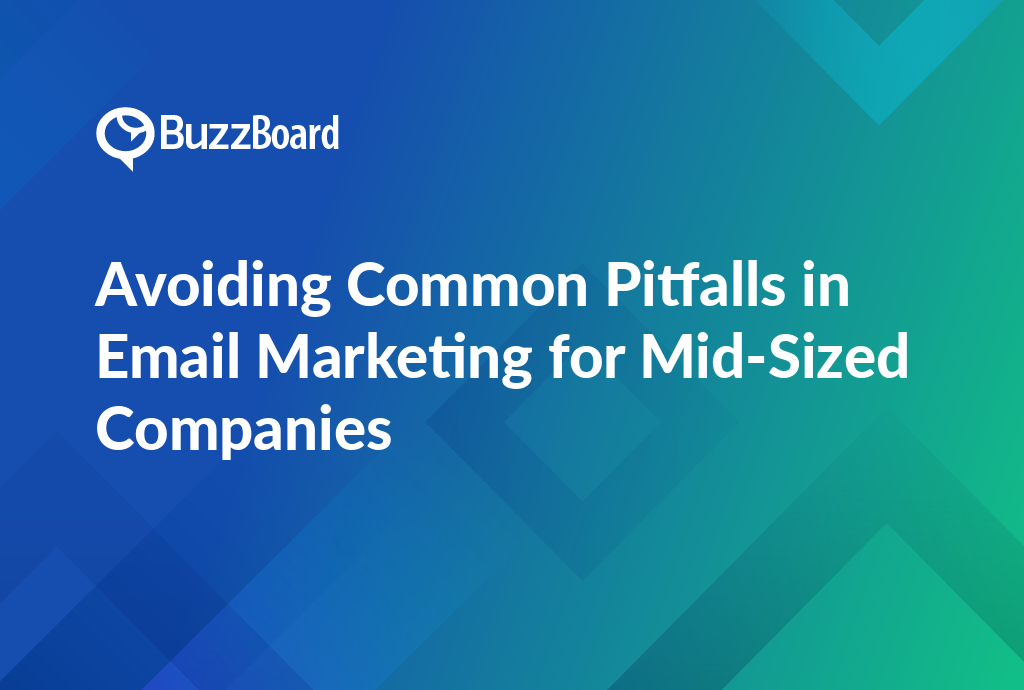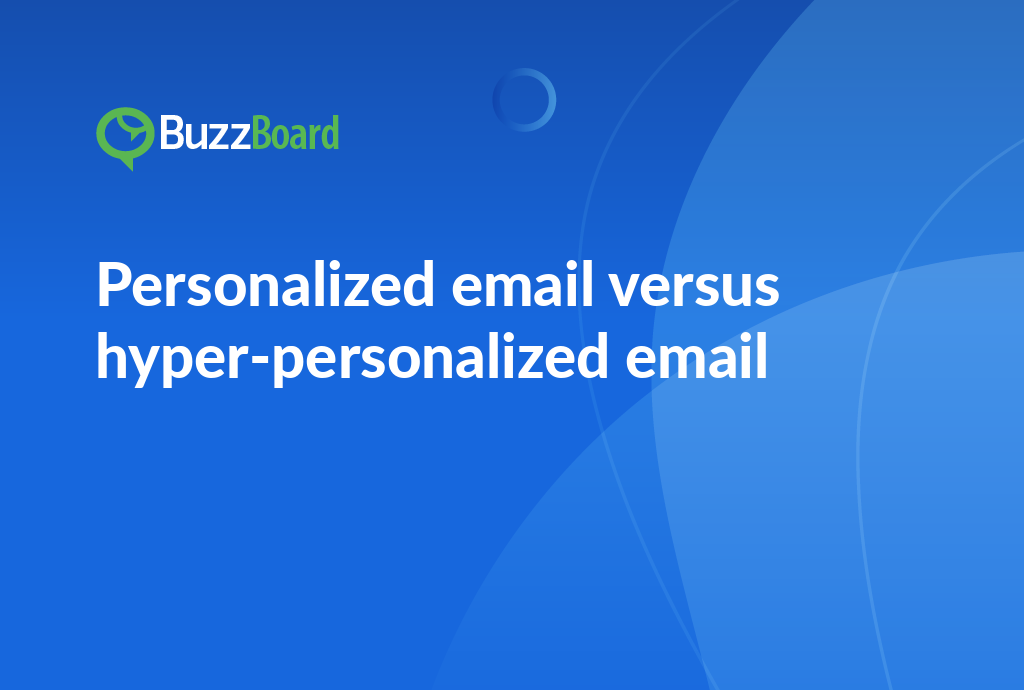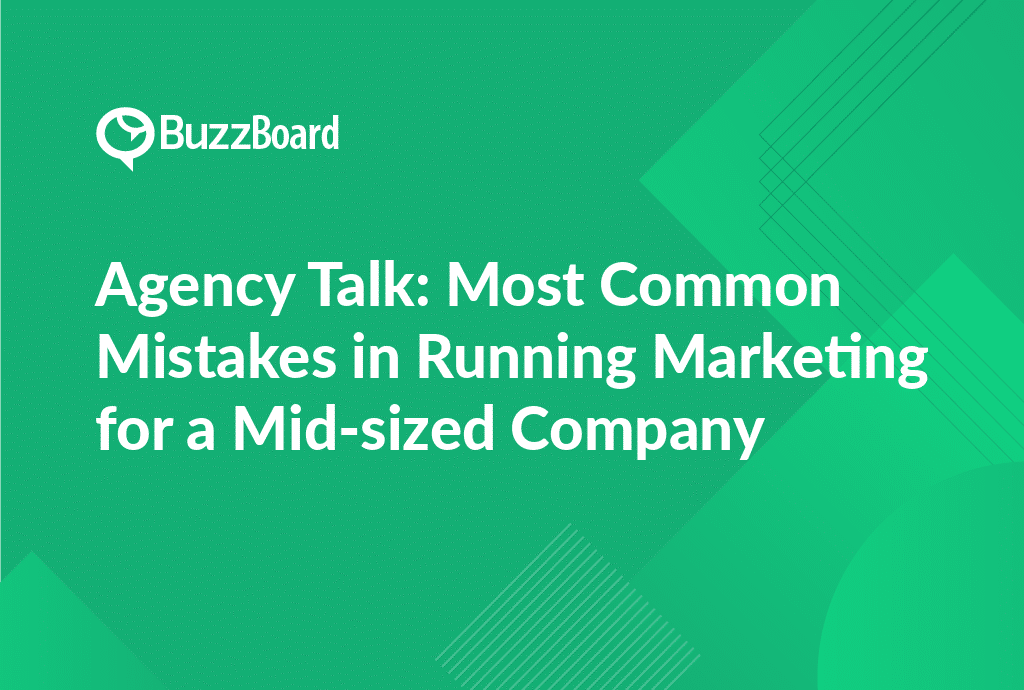What are the common pitfalls to avoid in email marketing for mid-sized companies? Mid-sized companies often fall into traps such as neglecting segmentation, failing to personalize content, and ignoring mobile optimization. Additionally, they may struggle with list fatigue, poor subject line crafting, and inadequate tracking and analysis. To succeed, mid-sized companies should focus on building targeted lists, crafting compelling subject lines, and optimizing their emails for mobile devices. By avoiding these common pitfalls, mid-sized companies can improve their email marketing ROI and drive more conversions.
What Are Some Common Challenges Faced by Mid-Sized Companies in Managing Email Marketing Campaigns and How to Overcome Them?
In the dynamic world of digital marketing, a common challenge that often befalls mid-sized companies is managing effective email marketing campaigns. Understanding and avoiding these frequent pitfalls in email marketing for mid-sized companies can notably improve response rates, boost brand visibility, and ultimately, enhance profitability.
A major hurdle that mid-sized companies must overcome is effectively segmenting their audience. Failing to appropriately target emails can lead to indifference and even worse, unsubscription. The antidote lies in conducting thorough research on mid-sized company clients’ demographics, tracking their behaviors, and using this data to segment your audience by aspects such as purchasing history or location.
Another lurking pitfall is the absence of personalization in email content. In today’s digital age, generic messages are a mere blip on the radar. Comparatively, emails offering a personalized experience elevate engagement and conversion rates. Employ dynamic content, an approach that tailors email content to each recipient using consumer data. This strategy allows mid-sized companies to connect more profoundly with their audience, positively influencing customer loyalty and promoting business growth.
The issue of email frequency is a common obstacle that mid-sized companies face when managing their marketing emails. While an aggressive email strategy may initially seem attractive to keep your brand top of mind with consumers, it can ultimately lead to fatigue, annoyance, and even damage to your brand reputation. Striking the optimal balance between frequency and relevance is crucial to ensure that your emails are well-received and effective.
To achieve this balance, it’s essential to monitor your engagement rates and unsubscribe reasons. This will help you identify patterns and trends in how your audience responds to your emails, allowing you to adjust your frequency and content accordingly. For example, if you notice that a significant number of subscribers are unsubscribing due to receiving too many emails, you may need to reassess your email frequency and consider implementing a more targeted approach.
Another critical aspect of email marketing that many mid-sized companies overlook is mobile optimization. With up to 77% of emails being opened on mobile devices, it’s essential to ensure that your emails are optimized for mobile viewing. Non-responsive designs can significantly hamper the success of your email campaign, leading to poor engagement rates and a negative user experience. Utilizing mobile-responsive templates can help you ensure that your emails look great on any device, regardless of screen size or resolution.
In addition to email frequency and mobile optimization, mid-sized companies may also encounter challenges related to audience segmentation, content personalization, and email automation. Effective audience segmentation involves dividing your email list into targeted groups based on demographics, behavior, or preferences, allowing you to tailor your content and messaging to specific segments. Content personalization involves using data and analytics to create personalized content that resonates with individual subscribers. Email automation, on the other hand, involves using software to automate repetitive tasks, such as sending welcome emails or abandoned cart reminders.
To overcome these challenges, mid-sized companies can implement various strategies, such as:
- Conducting regular email audits to identify areas for improvement.
- Utilizing email marketing software that offers advanced segmentation and personalization capabilities.
- Creating mobile-responsive templates to ensure that emails look great on any device.
- Implementing email automation workflows to streamline repetitive tasks.
- Monitoring engagement rates and unsubscribe reasons to adjust email frequency and content accordingly.
For digital marketing agencies aiming to offer proficient email marketing services to small businesses, understanding these challenges and the means to combat them can serve as a valuable tool to expand their businesses. By providing expert guidance and support, agencies can help small businesses overcome common email marketing pitfalls and achieve success with their email campaigns.
Managing email marketing effectively requires a deep understanding of the challenges that mid-sized companies face, as well as the strategies and best practices that can help overcome these challenges. By prioritizing email frequency, mobile optimization, audience segmentation, content personalization, and email automation, mid-sized companies can create effective email campaigns that drive engagement, conversions, and revenue.
As an Executive of a Digital Marketing Agency, What Role Can I Play in Helping My Mid-Sized Company Clients Avoid Pitfalls in Email Marketing?
As a vital component of the digital marketing arsenal, email marketing remains a powerful and result-driven strategy when executed flawlessly. However, even mid-sized companies can fall prey to common pitfalls that undermine their return on investment. As a leader in a digital marketing agency, it is essential to grasp these frequent pitfalls and know how to avoid them to deliver exceptional results for your clients.
One of the most common pitfalls of email marketing for mid-sized companies is the creation of ineffective subject lines. The impact of a creatively formulated subject line on email open rates is undeniable. A well-crafted subject line can entice recipients to open the email, while a poorly written one can lead to low open rates and a decrease in engagement. To avoid this pitfall, it is crucial to ensure that subject lines are not only attention-grabbing but also relevant, engaging, and free from clickbait tactics. This can be achieved by conducting A/B testing, analyzing subject line performance, and incorporating customer feedback to refine subject line strategies.
Another significant pitfall that mid-sized companies often encounter is the lack of quality and relevance in their email content. An email filled with irrelevant material can quickly render a company’s brand as spammy, leading to a decline in engagement rates and a negative impact on their reputation. To overcome this pitfall, it is essential to urge clients to personalize their emails and make their content customer-specific. This can be achieved by segmenting email lists, using customer data to tailor content, and incorporating customer feedback to improve email relevance.
Insufficient contact list segmentation is another common pitfall that can hinder the effectiveness of email marketing campaigns. Not every subscriber on a client’s list may be interested in every update, product, or offer. By failing to segment email lists, clients may be sending irrelevant content to subscribers, leading to low engagement rates and a decrease in overall email marketing performance. To avoid this pitfall, it is essential to segment email lists based on demographics, behavior, and preferences to offer personalized content that resonates with each subscriber.
Respecting spam laws and avoiding unsolicited emails is another critical aspect of email marketing that mid-sized companies often overlook. Sending unsolicited emails can harm a company’s reputation and lead to legal consequences. To avoid this pitfall, it is essential to ensure that clients comply with spam laws, obtain explicit consent from subscribers, and provide a clear and easy way for subscribers to opt-out of email communications.
As a digital marketing agency executive, your role extends beyond identifying these pitfalls. Offering informed guidance and expertise to help mid-sized company clients navigate these pitfalls can substantially elevate their email marketing effectiveness. By providing actionable insights and strategies to overcome common email marketing challenges, you can help clients achieve their marketing goals, improve their return on investment, and build a strong reputation in the market.
So, are you ready to empower your digital marketing agency to support your mid-sized company clients through email marketing challenges? By understanding the common pitfalls of email marketing and offering expert guidance, you can help clients achieve exceptional results, build strong relationships, and establish your agency as a trusted partner in their marketing journey.
Discussing the Do’s and Dont’s of Email Marketing Strategies Specific to Mid-Sized Companies: A Comprehensive Guide
For those serving mid-sized company clients, email marketing is a common area that requires a specialized approach. It’s a robust tool that isn’t always used to its full potential due to frequent missteps. However, if handled correctly, it can significantly boost customer engagement and conversions.
What should you consider when implementing an email marketing campaign?
Do’s
Don’ts
These are just a few of the do’s and don’ts of email marketing for mid-sized companies. Avoiding common pitfalls can help your company thrive and build a solid foundation for loyal customer relationships.
Remember, email marketing isn’t about bombarding customers with promotional emails. It’s a conversation, a way to stay connected while keeping your brand at the forefront of their minds. A respectful, informative, and engaging email campaign can carve out a niche for your business in a crowded marketplace.
Insights Into the Common Mistakes in Email Marketing Made by Mid-Sized Companies and How a Strategic Approach Can Make a Difference
Email marketing has become an indispensable tool for businesses of all sizes, serving as a powerful means to nurture leads, engage existing customers, and reinforce a brand’s presence. However, many mid-sized companies struggle to reap the benefits of email marketing due to the absence of a well-thought-out strategy. This can lead to a plethora of challenges, including creating engaging content, segmenting readers, testing emails, and tracking campaign success.
Mid-sized companies often find themselves grappling with the numerous aspects of email marketing, which can be overwhelming and lead to a lack of direction. Without a clear strategy, email campaigns may fail to achieve their goals, or worse, damage a brand’s reputation. To avoid these pitfalls, it is essential to identify the common stumbling blocks that hinder email marketing success.
The three primary categories of challenges in email marketing are content, database, and strategy. Firstly, crafting engaging, non-sales pitches that resonate with the target audience is a complex task for many mid-sized companies. This requires a deep understanding of the audience’s needs, preferences, and pain points, as well as the ability to create content that is both informative and entertaining.
Secondly, maintaining a clean, up-to-date email list is a significant challenge. This involves ensuring that the list is accurate, relevant, and regularly updated to reflect changes in the audience’s demographics, interests, and behaviors. Failure to do so can result in irrelevant emails being sent to the wrong people, leading to a decrease in engagement and a negative impact on the brand’s reputation.
Lastly, the lack of a clear strategy that includes segmentation, personalized email triggers, and analyzing campaign success often leads to the downfall of email marketing efforts. This requires a data-driven approach that involves tracking key performance indicators (KPIs), such as open rates, click-through rates, and conversion rates, to refine and optimize email campaigns.
To overcome these challenges, mid-sized companies need a systematic and tailored email marketing strategy that is designed to meet their unique needs and goals. This is where a digital marketing agency can play a crucial role. With expertise in compelling content creation, eye-catching template design, advanced email personalization tactics, and data-driven strategies, digital marketing agencies can help mid-sized companies transform their email marketing efforts from a complicated task to a viable and profitable enterprise.
As a digital marketing agency, your knowledge and skills can be pivotal in assisting mid-sized companies to navigate these common pitfalls. By providing a strategic approach to email marketing, you can help them to:
- Create engaging, relevant, and personalized content that resonates with their audience
- Build and maintain a clean, up-to-date email list that reflects the audience’s demographics, interests, and behaviors
- Develop a clear strategy that includes segmentation, personalized email triggers, and analyzing campaign success
- Track key performance indicators (KPIs) to refine and optimize email campaigns
- Enhance customer relationships and drive business growth through targeted and effective email marketing efforts
By providing a comprehensive email marketing strategy, you can help mid-sized companies to overcome the common pitfalls that hinder their email marketing success. This can lead to a significant boost in customer relationships, brand loyalty, and ultimately, business growth.
An In-Depth Analysis of the Pitfalls in Email Marketing for Mid-Sized Companies and How Digital Marketing Agencies Can Steer Clear of Them
Email marketing is a fundamental component of a digital marketing strategy for numerous reasons. It is an economical and direct way to reach customers, and when executed correctly, can be extremely effective in driving engagement, conversions, and ultimately, revenue. However, despite its many benefits, email marketing is not without its challenges. Many mid-sized companies have discovered that without careful planning and execution, email marketing campaigns can fall flat, resulting in low engagement rates, missed opportunities, and a lack of tangible results.
One of the most common pitfalls that mid-sized companies encounter is generic content. Many businesses default to sending the same emails to all their customers, without taking the time to segment their email list and personalize the content. This one-size-fits-all approach can lead to a lack of engagement, as customers are not receiving emails that are tailored to their specific needs and interests. In contrast, segmenting the email list and personalizing content can significantly boost engagement rates, as customers are more likely to respond to emails that are relevant and targeted to their individual needs.
Another frequently encountered hiccup concerns emails not being fully optimized for mobile devices. In today’s digital age, where a significant portion of web traffic is mobile, not optimizing emails for these devices can result in missed opportunities. With the majority of emails being opened on mobile devices, it is crucial that emails are designed with mobile users in mind. This includes using a responsive design, ensuring that the email is easy to read and navigate, and using clear and concise language.
A lack of precise measurement is another common challenge that mid-sized companies face. Without a tangible understanding of the performance of their email marketing campaigns, companies may continue repeating the same errors, without knowing what is working and what is not. This can lead to a lack of confidence in the effectiveness of email marketing, and a failure to optimize campaigns for better results. Highlighting the importance of analytics in gauging success and making necessary tweaks to email marketing campaigns can deliver substantial benefits, including increased engagement, improved conversion rates, and a better return on investment.
These are just a few of the many missteps in email marketing that mid-sized companies might face. However, the solutions to these challenges are not as elusive as they may first appear. By understanding the common pitfalls of email marketing, digital marketing agencies can offer specialized services to assist clients in avoiding these mistakes. This includes providing tools and services to assist with content personalization, mobile optimization, and campaign analytics.
By offering these services, digital marketing agencies can cater to the specific needs of their clients, while underlining their unique value proposition. This can include providing personalized content recommendations, mobile-friendly email templates, and analytics reporting and analysis. By providing these services, digital marketing agencies can help mid-sized companies overcome the common challenges of email marketing, and achieve greater success with their email marketing campaigns.
Email marketing is a powerful tool that can be used to drive engagement, conversions, and revenue. However, it is not without its challenges. By understanding the common pitfalls of email marketing, digital marketing agencies can offer specialized services to assist clients in avoiding these mistakes. By providing tools and services to assist with content personalization, mobile optimization, and campaign analytics, digital marketing agencies can help mid-sized companies achieve greater success with their email marketing campaigns, and drive tangible results for their business.
Conclusion
In conclusion, email marketing is a crucial component of any mid-sized company’s marketing strategy. However, it’s easy to fall into common pitfalls that can hinder the effectiveness of your campaigns. By understanding the most common mistakes to avoid, you can take a proactive approach to improving your email marketing efforts.
By segmenting your lists, personalizing your content, and optimizing for mobile, you can increase engagement and conversions. Crafting compelling subject lines and avoiding list fatigue can also help to keep your audience engaged. And, by tracking and analyzing your results, you can refine your strategy and make data-driven decisions.
By avoiding these common pitfalls, mid-sized companies can achieve greater success with their email marketing efforts. Remember, email marketing is a powerful tool that can help you build stronger relationships with your customers, drive more conversions, and ultimately, grow your business. By staying informed and adapting to the latest best practices, you can stay ahead of the competition and achieve your marketing goals.”








